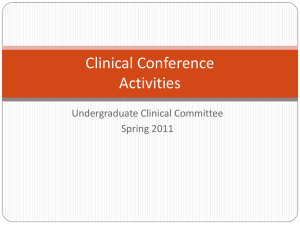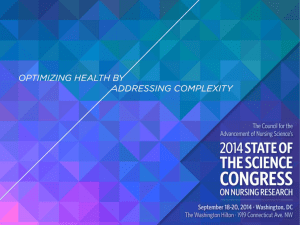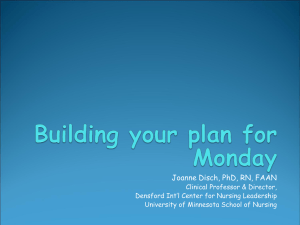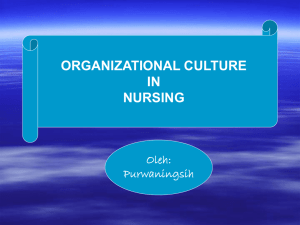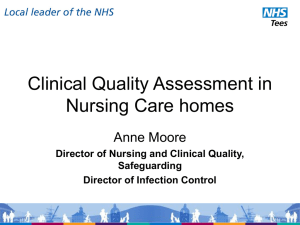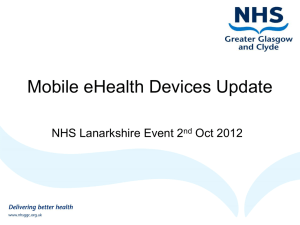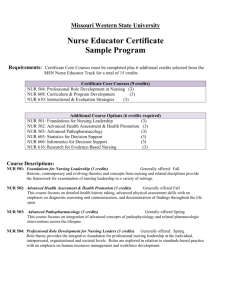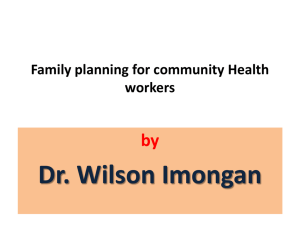Assessment Comes First in the Alphabet
advertisement
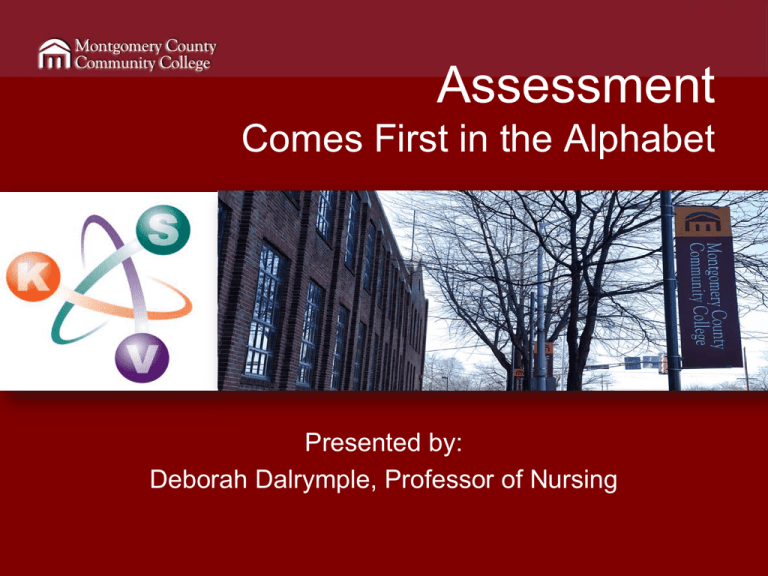
Assessment Comes First in the Alphabet Presented by: Deborah Dalrymple, Professor of Nursing Agenda • Team Information • History of Core at MCCC • Core Application – – History 203 – English 101 – Nursing • Assessment Strategies • Lessons Learned • Next Steps Additional Team Members: Cathy Parzynski Cathy Carsley History of Core at MCCC History Current Core Established 1996-1997 • Course Driven Model • Transfer: 36 credits • Career Options: 23 credits or 17 credits • Different options depending on degree • All degree students to experience and master parallel content that defined an “educated person” New Core Curriculum Began in-depth review in 2004-2005 • Completed best practices review • Aligned with Middle States Standards • Endorsed approach incorporating both coursedriven and competency based threaded models • Approved by BOT 13 Principal Goals & Core Learning Outcomes of Core Education • Commitment to inclusion of assessment strategies from the beginning 13 Principal Goals & Core Learning Outcomes of Core Education Skills Knowledge Values • GOAL 1: Communication Skills • GOAL 2: Analytic Skills • GOAL 3: Quantitative Skills • GOAL 4: Computer Fluency • GOAL 5: Information Literacy • GOAL 6: Intellectual Heritage • GOAL 7: Aesthetic Sensibility and the Arts • GOAL 8: Physical and Life Sciences • GOAL 9: Behavioral and Social Sciences • GOAL 10: Exercise and Health Sciences • GOAL 11: Civic Responsibility • GOAL 12: Sensitivity to Global Perspectives and Cultural and Social Diversity • GOAL 13: Ethical Reasoning and Behavior Course/Program Status • All programs were reviewed • Core is met through – Individual courses approved for goal – Course combinations (ECO121/122) – Course and/or program activities • Fine Arts degree AST, PHY or CHE with ART requirements • CIS 110 in combination with HOS 130, HOS 198 + HOS 220 • A series of assignments across a curriculum Core Application for History 203 Core Application for History 203 Cathy Parzynski Completed Grid Used for Assessment Revising the ACT 335 Form 1998 Outcomes • • • • • Develop proficiency in reading and writing within the conceptual framework of United State History Increase proficiency in oral communication within the conceptual framework of United States history Identify, analyze and question the principle conceptual issues in United States history Demonstrate a basic familiarity with the various components of United States history and an appreciation of their global and multicultural nature Develop a familiarity with the ethical issues contain in United States history Revised Outcomes • • • • • • Identify the major events which helped shape the political, economic, social, and cultural identify of the American people up to the Civil War Identify key social, economic, cultural, and political themes in American history to the time of the Civil War Analyze common institutions in American society and how they have affected different groups. Assess America’s evolving relationship with the rest of the world Analyze the influence of various ethnic and gender groups on American history before 1877 Evaluate the relationships between the causes of historical events and their effects Core Application – English 101 Core Application for English 101 Cathy Carsley Revising the ACT 335 Form 1998 Outcomes Revised Outcomes • • • • • To teach the student to write a coherent, unified and well-developed 500-750 word essays using various expository To teach clear thinking: the student must recognize careless generalities, unsubstantiated judgments, illogical association of ideas, etc To teach the student how to write correctly, eliminating errors in sentence structure, punctuation, spelling and usage • • • • • • Read critically Evaluate a writing task for purpose, audience, context, and point of view Address a topic using a rhetorical strategy appropriate to the writing task Locate outside information sources with basic proficiency Develop coherent and persuasive essays that present carefully developed and well-supported theses Use formal, standard usage, grammar, and punctuation Cite the work of others using a standard model of documentation Adopt ethical writing standards Completed Grid Used for Assessment Core Application – Nursing Nursing Program • Program Maps • Goals threaded within program – Oral Communication – Quantitative Reasoning – Computer Fluency – Exercise & Health Science – Civic Responsibility – Ethical Reasoning Sample Core Map #4 Computer Fluency #5 Information Literacy Computer fluency is embedded in the Nursing curriculum. Students interface with the electronic medical records on clinical sites, computerized medication administration and dispensing systems, and computer programs within the nursing arts laboratory. Additionally across the nursing curriculum, the student is exposed to the use of Blackboard e-education platform, blogging, computer assisted technology and instruction and computer posted assignments and grading. Across the curriculum: use of Blackboard for grades; homework; posting of assignments; use of library and electronic search resources across curriculum homework assignment; use of email; electronic submission of journals; use of various CAI available at MC3; use of simulations to promote learning, including virtual reality venipuncture program, VitalSim mannequins; and SimMan mannequin NUR 106 and NUR 213 are required nursing courses that offer on-line sections. PSY 101 Met by required courses in the curriculum sequence: ENG 101, ENG 102, BIO 140, SOC 101 Incorporated across the Nursing curriculum is Program Outcome #1 - Integrate critical thinking when incorporating knowledge from the sciences and humanities in the delivery of nursing to clients Assessment Strategies English Pilot Assessment Rubric Course Outcomes Linked to Core Outcomes Pilot Assessment Plan Pilot Set Benchmarks Pilot Set Benchmarks Lessons Learned Ongoing Communication is Key • Re-iterate new outcomes, including new outcomes centered on use of sources • Distribute assessment rubric • Circulate sample syllabi and assignments • Encourage Library instruction • Develop FAQs for part-time faculty • Create mentoring group Marketing Plan is Essential Access to Resources is Crucial • Webpage dedicated to each goal and courses that meet it • Combination Goals as required by POS Next Steps Continuous Improvement is Required • Need for more courses via workshops • Need for interdisciplinary courses • New Course Development Opportunities – ECO 117 – Sustainability What Assessment Is Already Underway? • • • • • • • • • ENG 101 and 101 for Goals 1a, 2, and 5 SPC 110 for Goal 1b (pilot) MAT 106 for Goal 3 (pilot) Computer Fluency Test exploration for Goal 4 HIS gatekeeper courses redesign for Goal 6 PSY 101, POL 124 Goal 9 individual faculty pilots ESW case study re-pilot Values goals via CSSE survey Nursing Program assessment started Tentative Calendar Summary • A dynamic process • A change in culture • All campus engagement • Questions • Contact ddalrymp@mc3.edu


